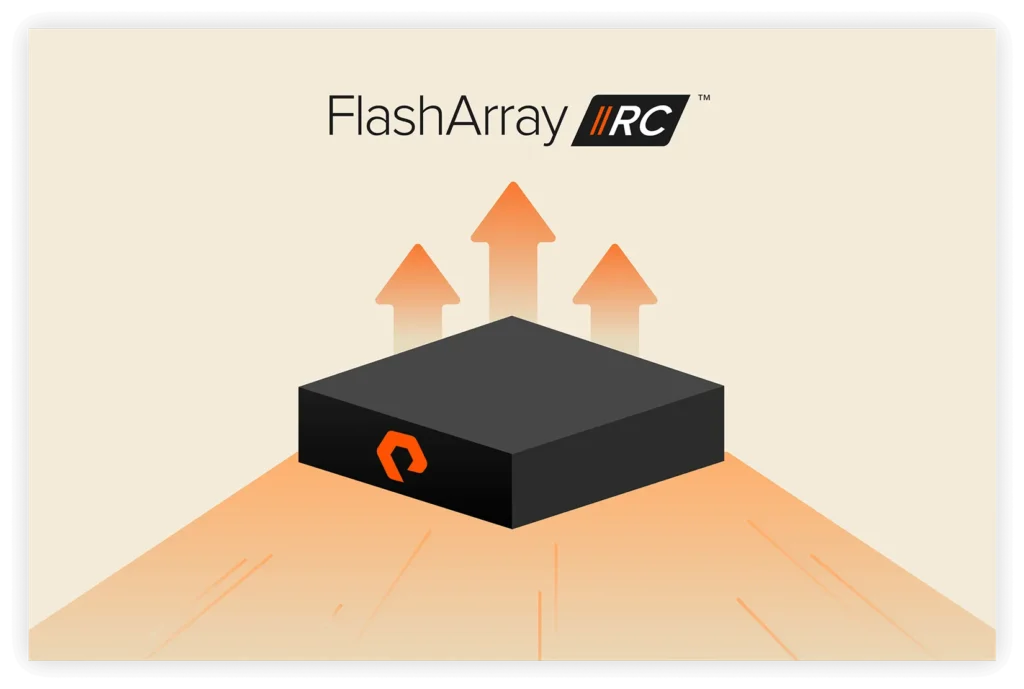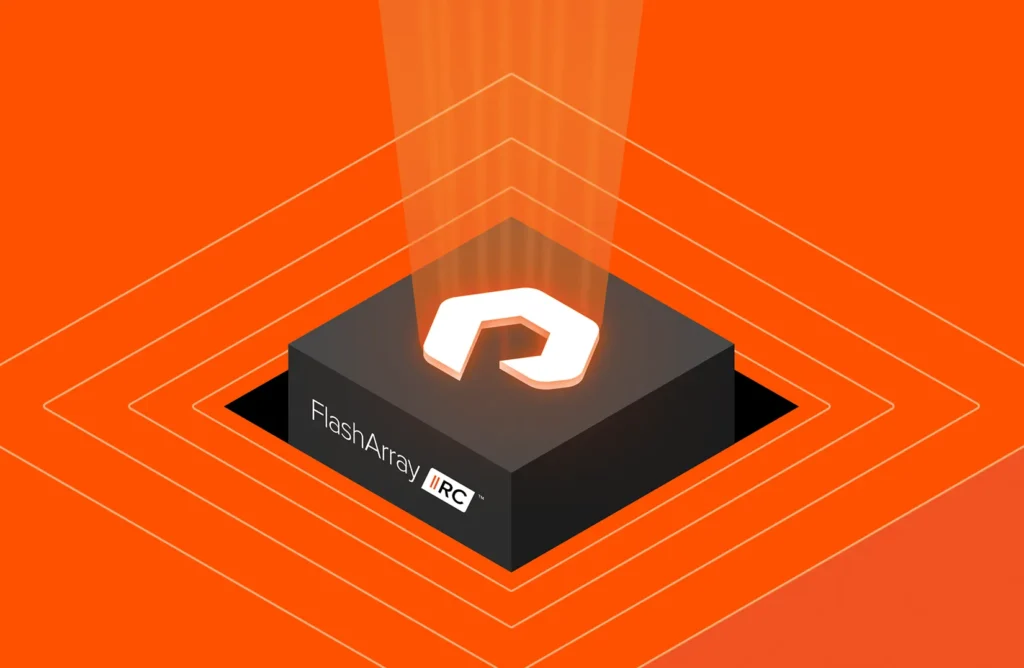Just because something is old doesn’t mean it has lost its value or become obsolete. Think of vintage cars, point-and-shoot cameras, or vinyl records. They’re classics that have stood the test of time.
These days, most people want the latest, shiniest gadgets—smartphones, smartwatches, laptops, digital cameras, vehicles… Even if they still keep their old flip phones, it’s generally for the sake of nostalgia. It’s hard not to be intrigued by the latest technology and want to experience it.
The Server Message Block (SMB) internet protocol has been around since 1983. While technology changes quickly, some inventions are so groundbreaking they maintain their staying power. SMB is one of them. That’s why Pure Storage® is revitalizing SMB in FlashBlade® and making it even more powerful.
FlashBlade rejuvenates the legacy SMB protocol, giving it a modern reinvention in Purity//FB 3.2. It’s unique and far different from your grandfather’s version. Before we discuss why it’s different, let’s shed some light on the history and intricacies of the SMB protocol.
SMB Is Old and Complex
First developed by IBM in early 1983, SMB is the all-encompassing protocol that Windows machines use for sharing files, printers, and other resources on a network.
Since 1990, Microsoft has done most of the development of the protocol after merging it into LAN Manager. Microsoft changed the name of SMB 1.0 to Common Internet File System (CIFS) and defined its specifications. In 2006, Microsoft reverted to the original SMB naming and released SMB 2.0. Significant improvements in the 2.0 version reduced the chattiness of SMB 1.0. Microsoft also introduced new features and improved usability for applications.
Since then, Microsoft has released several generations of SMB, including 2.1, 3.0, 3.02, and 3.1.1. Using the same core foundation of SMB 2.0, Microsoft continued to make it more robust, stable, scalable, secure, performant, and non-disruptive. SMB 3.x features are more applicable to Hyper-V, SQL Database, and media streaming workloads.
SMB is simple to use, but it’s also the most complex networking protocol of all. That’s because you must consider the environment in which it operates, not just the SMB protocol. SMB supports multiple versions of dialect negotiations and has features that have been built over three decades. SMB:
- Provides interoperability with a variety of other protocols, including TCP/IP, RPC, SSL, LDAP, and more
- Works with services such as DNS, NTP, ID mapping, IPC, netlogon, browser, directory services, and others
- Supports a wide variety of authentication methods, including LM, NTLM, NTLMv2, TLS, and Kerberos
- Handles multiple levels of encryption such as DES ciphers, RC4-HMAC, AES128, and AES256
Implementing the SMB protocol using the specs is one thing. However, you also need to think about storage-side implementations for complex multiprotocol workflows. It gets further compounded when you have to integrate SMB with really complex Microsoft Windows domain environments and functionalities. It’s a herculean task for any storage vendor to implement the SMB protocol in its product from scratch.
Why Is SMB Still Around?
SMB’s staying power is due in large part to the success of the Microsoft Windows operating system (OS), which continues to dominate the market decades after its release. Introduced in 1985, Windows still dominates with 88% of the desktop OS market and 72% of the server OS market. Whether it’s handling the data produced by end users or generated by machines, Windows uses SMB as its core file-sharing protocol.
Over the past three decades, many applications have been developed to run on Windows to generate, analyze, synthesize, and visualize data for a multitude of use cases. These types of workflows are ubiquitous in industries such as:
- Healthcare
- Energy and utilities
- Finance
- Government
- Information technology
- Insurance
- Life sciences
- Manufacturing
- Media and Entertainment
- Oil and gas
- Real estate
- Scientific research
- Telecom
So, while SMB may be old, its ubiquity ensures that it won’t be fading away anytime soon.
How Does FlashBlade Improve SMB?
If you’ve ever considered buying a car that’s fast and fun to drive, you know you’d likely have to pay for that privilege at the fuel pump. What if you can pair high performance with the best fuel economy and great customer experience?
For data storage, here’s how Pure does it. Pure introduces fast, scale-out native SMB support in FlashBlade, an industry-leading unified fast file and object (UFFO) platform, to complement NFS and S3. With Purity//FB 3.2, FlashBlade now provides comprehensive high-performance multiprotocol support for any workload with very low power consumption. Built on the solid foundation of FlashBlade’s distributed and massively parallel all-flash architecture, this fast SMB implementation greatly accelerates Windows applications. Irrespective of large or tiny file sizes, SMB is quite comfortable with high density of files and delivers phenomenal delete performance. It offers a new cross-protocol file access security design for SMB and NFS interoperability while safeguarding the ACLs for both.
With FlashBlade’s native SMB, the integration with Active Directory is much more secure, simple, optimized, and flexible. Minimal permissions are needed to join the Active Directory domain. You also get a choice of encryption type, encrypted LDAP communication, an optimized path to domain controllers, smart defaults, and a unified workflow to configure directory services for SMB and NFS. Enhanced, user-friendly diagnostics guide you through troubleshooting Active Directory connectivity.
FlashBlade’s native SMB also provides comprehensive data management and data protection using file system quotas, file replication, file system rollback, and Pure’s SafeMode™ snapshots to protect against ransomware attacks. FlashBlade delivers a simple, secure design for a complex protocol. It boosts performance and consolidates the vast majority of your Windows-based workloads on a single storage platform without requiring any special optimization. This UFFO storage platform eliminates data silos, resulting in an impressive reduction in data-center footprint and simplifying the infrastructure needed to deliver Pure’s Modern Data Experience™.
With Purity//FB 3.2, FlashBlade expands fast-native SMB to new use cases including data protection for SQL Server, healthcare PACS, EDA, genomics, oil and gas seismic analysis, media and entertainment post production, research analytics, financial simulations, software development, and more. With Purity//FB 3.2, FlashBlade offers two validated solutions: Fast SQL Server Backup and Restore with a phenomenal backup speed of >1TB/min and Healthcare PACS for industry-leading PACS/VNA applications.
Better, Faster, Stronger SMB for Modern Data
Ask yourself: Do you want a car that is fast and fun to drive, yet simple to operate? Do you want the best fuel economy and the latest technology? Then don’t compromise with an old gas guzzler that doesn’t have power steering.
Similarly, for a simple storage experience without compromises, sit back and enjoy the drive with FlashBlade. Purity//FB 3.2 brings freshness to its SMB implementation that helps take you to a Modern Data Experience. With FlashBlade, you get the greatest simplicity, optimal performance, and best power economy for your data center.
Stay tuned for upcoming posts on fast SQL Server Backup and Restore and Healthcare PACS solutions.
Get More from SMB
Drive your organization into the future with the industry’s most advanced all-flash storage solution.






